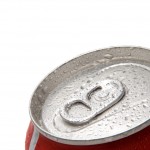
There are concerns about the increase in tooth erosion with a recent review suggesting a prevalence of around 30% with estimates ranging from 7-74%. The increase in the consumption of acidic food and drinks are considered to contribute to this increase. The aim of this review was to assess the influence of diet on tooth erosion in children and adolescents.
Methods
Searches were conducted in the Medline, Web of Science, Scopus, Science Direct, EBSHost, Scientific Electronic Library online (SciELO) databases. Population-based cross-sectional and longitudinal studies were included that assessed tooth erosion and diet, in the permanent dentition of children and adolescents were considered.
Two reviewers independently selected studies. Study quality was assessed using the STROBE statement and the Newcastle-Ottawa Quality Assessment Scale (NOS). The pooled effect of dietary habits on tooth erosion occurrence was calculated using a fixed and a random model (OR and 95%CI). Each dietary group was considered a different outcome; consequently, specific meta-analyses were performed to each outcome.
Results
- 13 studies involving a total of 16,661 children were included in the meta-analysis and meta-regression. 11 studies were cross-sectional and 2 longitudinal.
- Dietary habits data were obtained predominantly from brief dietary assessments (69.2%). Food amount – weighed or estimated – and food frequency questionnaires were less common (15.4%).
- The instruments were mostly self-administered (84.6%), assessed diet one time (61.5%) and required recalls of a week or more days or usual behaviours (46.2%).
- Carbonated/soft drinks, sports drinks, milk-based drinks, yogurt, confectionery and snacks and acidic natural fruit drinks were submitted to meta-analysis.
- Higher consumption of carbonated drinks or acid snacks/sweets and for acid fruit juices increased the odds for tooth erosion, while higher intake of milk and yogurt reduced the odds of erosion.
| Odds ratio (95% CI) | |
| Carbonated drinks | 1.60 (1.29 – 1.99) |
| Sports drinks | 2.13 (0.95 – 4.77) |
| Natural fruit juice | 1.20 (0.02 – 1.42) |
| Confectionery and snacks | 2.31 (1.13 – 4.73) |
| Milk | 0.96 (0.91 – 0.99) |
| Yoghurt | 0.77 (0.64 – 0.91) |
Conclusions
The authors concluded: –
The evidence indicated that some dietary habits (soft drinks, acidic snacks/sweets and acidic fruit juices) increased the odds for erosion occurrence, while milk or yogurt produced a protective effect. Methodological issues were shown to partly explain the heterogeneity of the data for some dietary products.
Comments
This review used wide range of data sources and has included 13 studies all but two being cross-sectional. One of the concerns relating to cross sectional data is whether the information collected on diet at any particular point in time is reflective of diet over a longer period. The authors themselves question the potential of the various instruments used to gather dietary data having an impact on their findings, for example they note that, ‘The association of diet and erosion was higher in those studies that administered the instrument more than one time.’
The authors note that 34% of the children sampled in this review had tooth erosion, which is similar to the mean values found in recent review (Dental Elf – 27th Nov 2014). The findings of the review support an association between the carbonated drinks, natural acidic fruit juices, and confectionery and snacks and a higher risk of tooth erosion and a reduced risk in those with high consumption of milk and yogurt. However, the quality of the available evidence is limited and higher quality longitudinal studies with robust collection of diet data would be helpful.
Links
Salas MM, Nascimento GG, Vargas-Ferreira F, Tarquinio SB, Huysmans MC, Demarco FF. Diet influenced tooth erosion prevalence in children and adolescents: Results of a meta-analysis and meta-regression. J Dent. 2015 Jun 7. pii: S0300-5712(15)00139-6. doi: 10.1016/j.jdent.2015.05.012. [Epub ahead of print] Review. PubMed PMID: 26057086.
Dental Elf – 11th Nov 2014 – Tooth erosion: review suggests an association with eating disorders

Higher risk of tooth erosion with carbonated drinks http://t.co/GjhrGqhClY
Tooth erosion: carbonated drinks associated with higher risk https://t.co/Et3f6ZP60R via @sharethis
Confectionery and snacks increase risk of tooth erosion http://t.co/GjhrGqhClY
Tooth erosion associated with carbonated drink consumption http://t.co/GjhrGqhClY
Carbonated drinks & confectionery increase risk of tooth erosion http://t.co/GjhrGqhClY
Indeed the comments made by Dr Richards are correct. Most of the studies included in our systematic review were related to cross-sectional studies, where we have the problem of reverse causality, which is inherent to this type of study. Longitudinal studies could help to overcome this problem, but these studies are time consuming, have a high cost and are relatively rare. Next years, our research group will be conducting an Oral Health survey at the age 12 in the 2004 Pelotas Birth Cohort, where we will investigate the presence and severity of erosive tooth wear and we will be able to correlate it with the feeding practices of these children during their life course, since these children have been followed since their birth. I strong believe that we will be able to offer a strong contribution to the relationship between diet and erosion.
Thanks Flavio – It will be great to see the results of your work with the Pelotas Birth Cohort in due course.
Don’t miss – Tooth erosion: carbonated drinks associated with higher risk http://t.co/GjhrGqhClY
Carbonated drinks associated with higher risk of tooth erosion…… http://t.co/3xqY5IzVMq
[…] Dental Elf – 15th Jul 2015 – Tooth erosion: carbonated drinks associated with higher ris… […]